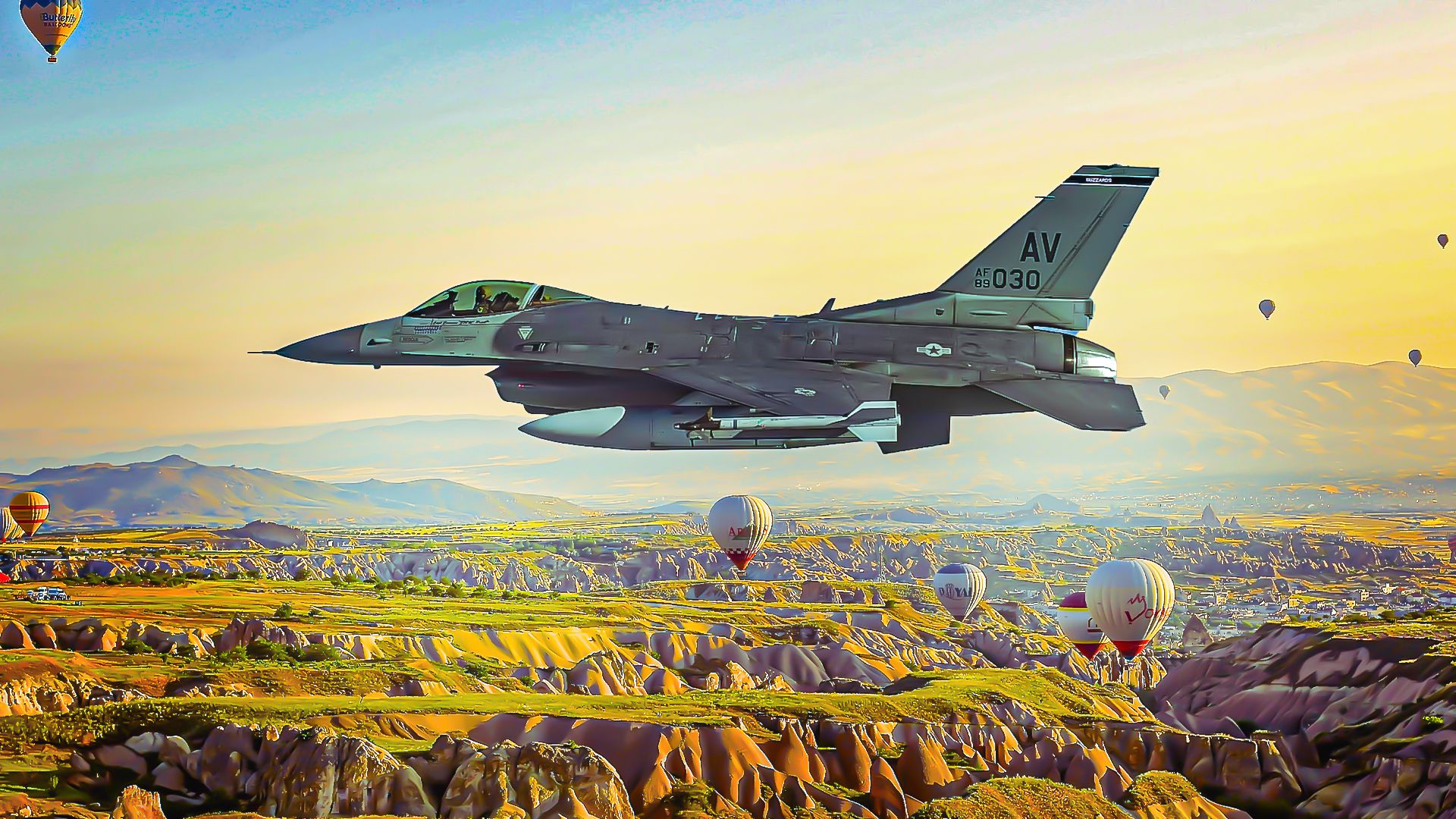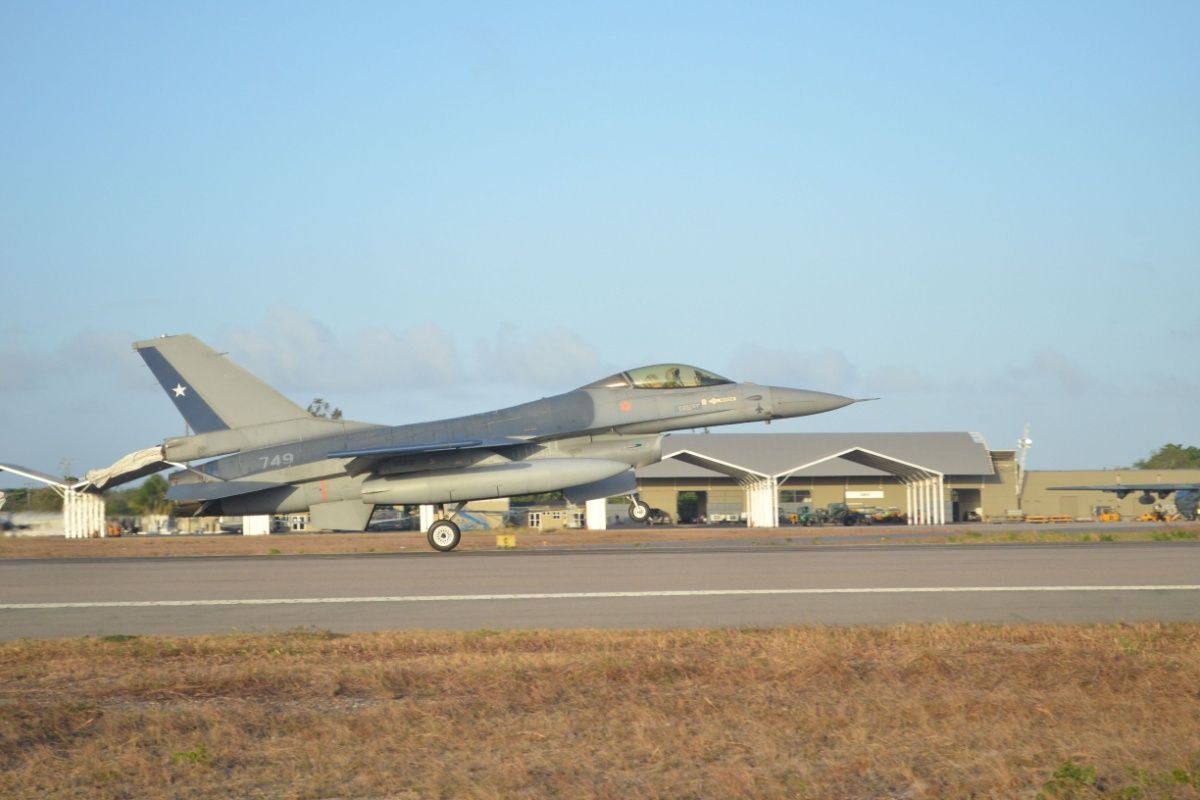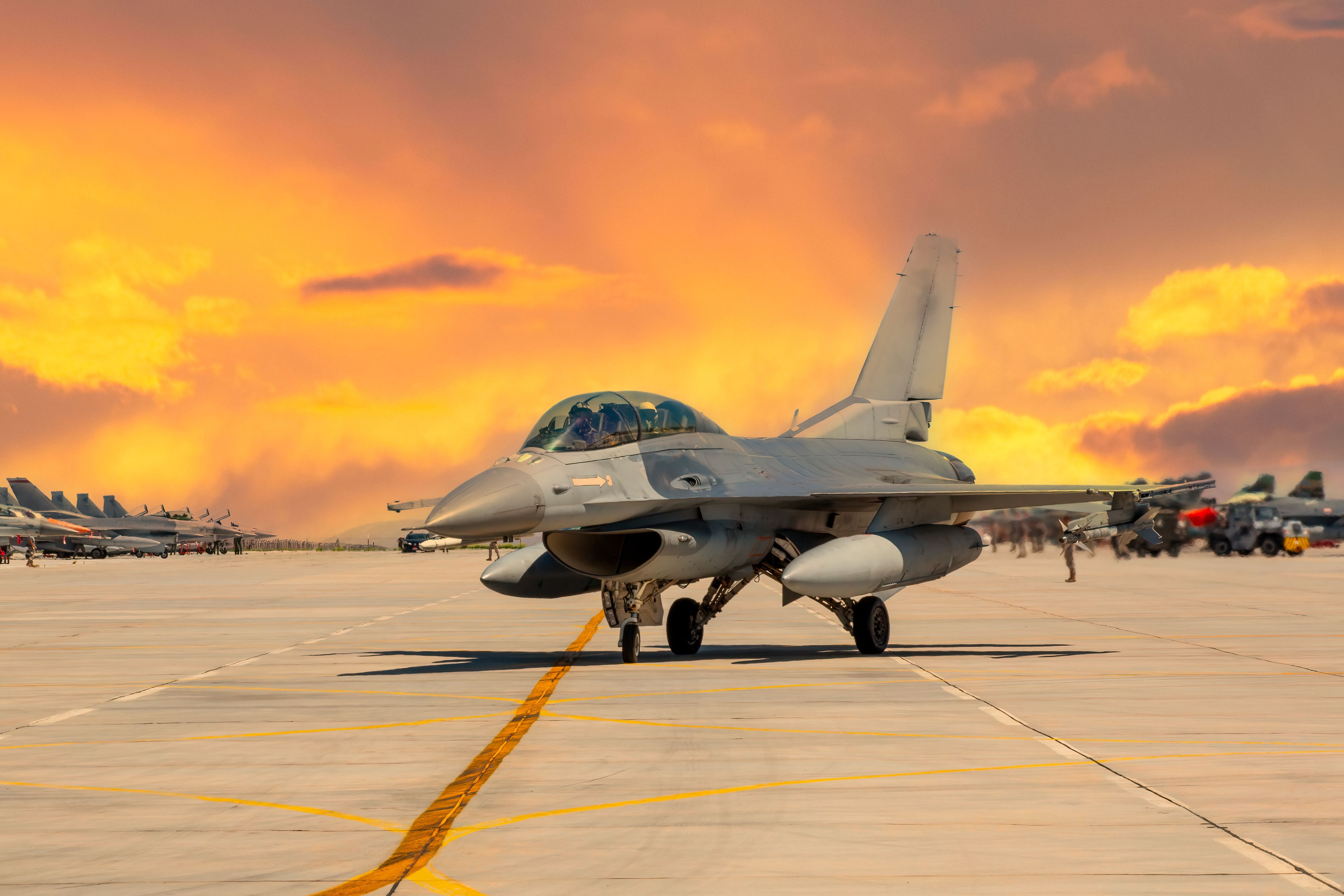Summary
- The F-16 excels in SEAD missions with advanced electronics and precise controls.
- It played a pivotal role in air combat during Operation Instant Thunder.
- Flying above 50,000 feet, it can accurately deliver ordnance during non-visual bombing conditions.
The General Dynamics F-16 Fighting Falcon is a highly maneuverable multi-role aircraft designed for air-to-air and air-to-ground combat missions. The high-performance weapon system onboard the F-16 is designed for the United States and allied nations.
The F-16 has played a major role in suppressing the enemy’s ground-air-based air defenses. From surface-to-air missiles and torpedos to anti-aircraft artillery, the F-16 is equipped to take it all. This article focuses on the F-16’s role in Suppressing Enemy Air Defenses (SEAD), which ranges from communications and navigation to direct attacks.
General Dynamics F-16
- Power plant: F-16C/D: one Pratt and Whitney F100-PW-200/220/229 or General Electric F110-GE-100/129
- Thrust: F-16C/D, 27,000 pounds
- Wingspan: 32 feet, 8 inches (9.8 meters)
- Length: 49 feet, 5 inches (14.8 meters)
- Height: 16 feet (4.8 meters)
- Weight: 19,700 pounds without fuel (8,936 kilograms)
- Maximum takeoff weight: 37,500 pounds (16,875 kilograms)
- Fuel capacity: 7,000 pounds internal (3,175 kilograms); typical capacity, 12,000 pounds with two external tanks (5443 kilograms)
- Payload: two 2,000-pound bombs, two AIM-9, two AIM-120 and two 2400-pound external fuel tanks
- Crew: F-16C, one; F-16D, one or two
The high-performance combat aircraft comes in two different seating configurations. The F-16A is a single-seat model that first flew in December 1976. The first production aircraft was delivered to the United States Air Force (USAF)’s 388th Tactical Fighter Wing at Hill Air Force Base, Utah, in January 1979.
Photo: Artejose l Shutterstock
The F-16B features a tandem seating configuration that allows various provisions for multi-role precision capabilities, including precision strike, interdiction, and night attack beyond visual range. Most enhancements were later incorporated into all newer production aircraft, particularly those delivered after November 1981.
Both configurations are highly strategic and tactical during SEAD operations. According to the Air Force,
“In an air combat role, the F-16’s maneuverability and combat radius (distance it can fly to enter air combat, stay, fight and return) exceed that of all potential threat fighter aircraft. It can locate targets in all weather conditions and detect low flying aircraft in radar ground clutter.”
“In an air-to-surface role, the F-16 can fly more than 500 miles (860 kilometers), deliver its weapons with superior accuracy, defend itself against enemy aircraft, and return to its starting point. An all-weather capability allows it to deliver ordnance during non-visual bombing conditions accurately.”
SEAD missions
- Speed: 1,500 mph (Mach 2 at altitude)
- Range: more than 2,002 miles ferry range (1,740 nautical miles)
- Ceiling: above 50,000 feet (15 kilometers)
- Armament: one M-61A1 20mm multibarrel cannon with 500 rounds; external stations can carry up to six air-to-air missiles, conventional air-to-air and air-to-surface munitions and electronic countermeasure pods
Suppression of Enemy Air Defenses (SEAD) missions can be achieved by physically destroying enemy targets or by implementing electronic warfare to deceive or disrupt enemy advances. The Air Force states that approximately 30% of all military sorties are SEAD missions.
In recent conflicts, nearly 25% of all US military sorties have been SEAD missions. While SEAD missions can also be undertaken from the ground, the F-16 Fighting Falcon has a tremendous record for SEAD-based sorties.
With its relatively lightweight fuselage and the ability to withstand up to nine G’s in flight, the F-16 exceeds the combat capabilities of many current aircraft. The advanced controls, including the fly-by-wire system. onboard the aircraft allows superior maneuvers during combat missions.
According to the Air Force,
“The pilot has excellent flight control of the F-16 through its “fly-by-wire” system. Electrical wires relay commands, replacing the usual cables and linkage controls. For easy and accurate control of the aircraft during high G-force combat maneuvers, a side stick controller is used instead of the conventional center-mounted stick.”
The highly precise side stick controls accurately send electrical signals to flight control actuators for efficient maneuvering. Moreover, the pilots get an unobstructed view of the surroundings, including an improved seat-back angle of up to 30 degrees. This increases pilot comfort and ensures greater tolerance during high G maneuvers.
For over four decades
While primitive SEAD operations emerged during World War II, extensive use of SEAD missions did not occur until the 1990s. During the Gulf War, the US conducted intense aerial attacks on Iraq’s integrated air defenses. As part of Operation Instant Thunder, US F-16s played a major role in destroying all Iraqi air defenses in the south.
Photo: Ali _Cobanoglu | Shutterstock
Unlike many fighters, the F-16 can target beyond visual range, avoiding low-level flights. Since surface-to-air missile (SAM) sites are unpredictable, performing SEAD missions from standoff distances is highly desirable.
The F-16 Fighting Falcon created localized air superiority by avoiding and suppressing the Iraqi integrated air defense system (IADS). The ace fighter successfully deceives enemy systems and countertactics, including limiting radiation, employing passive shot doctrine, and using camouflage and deception.



